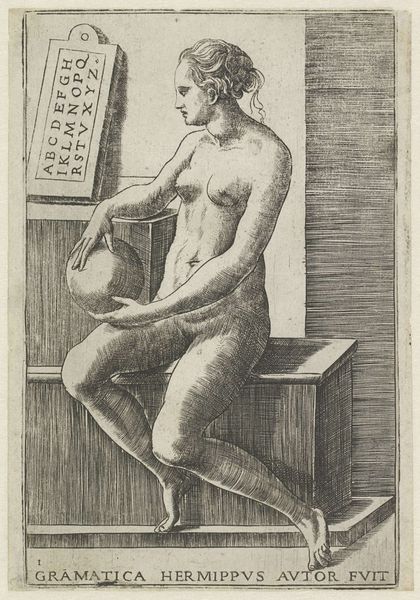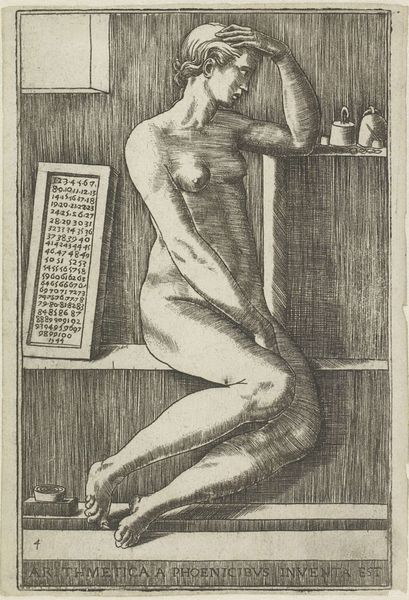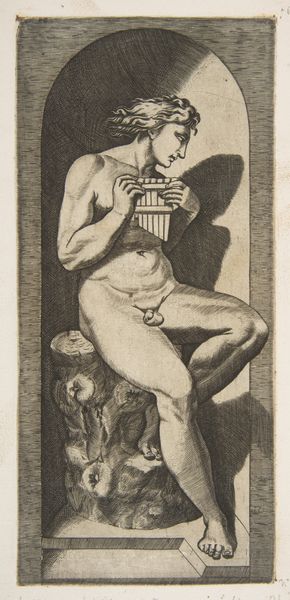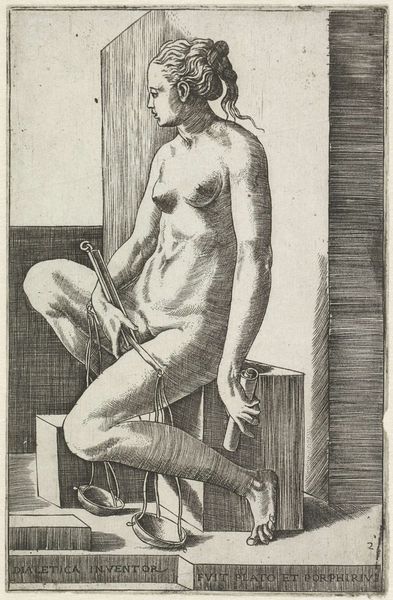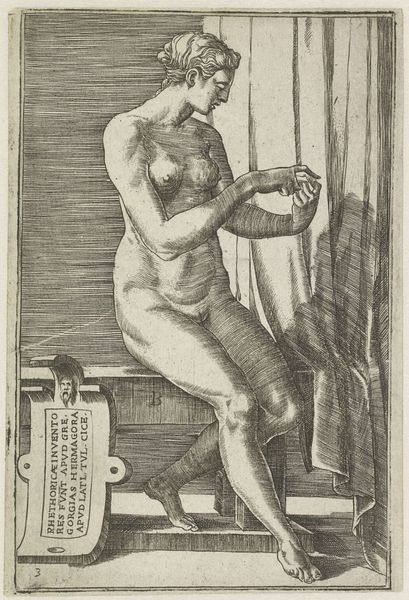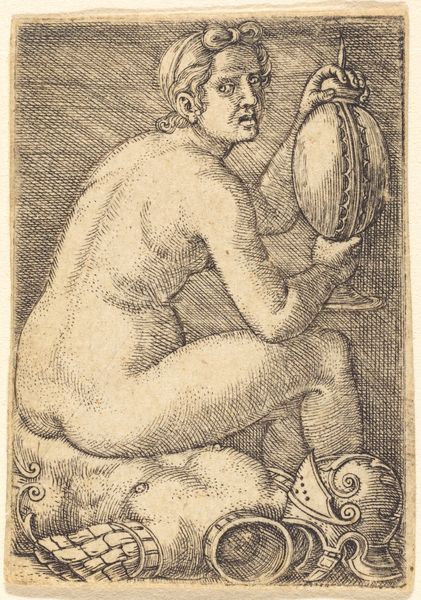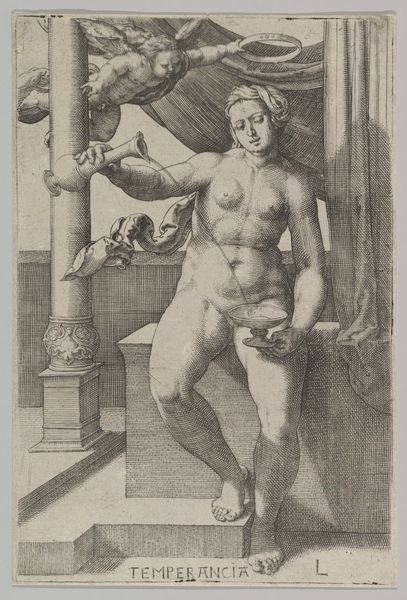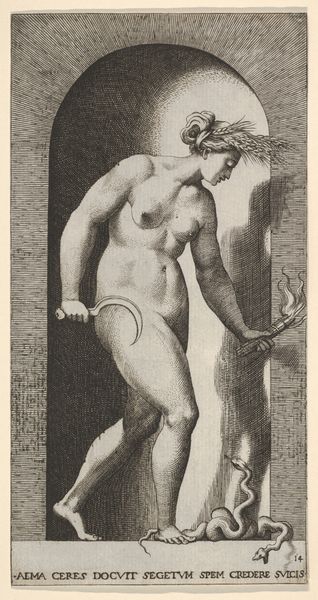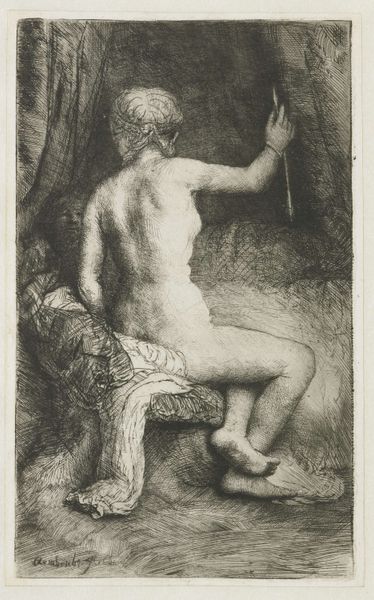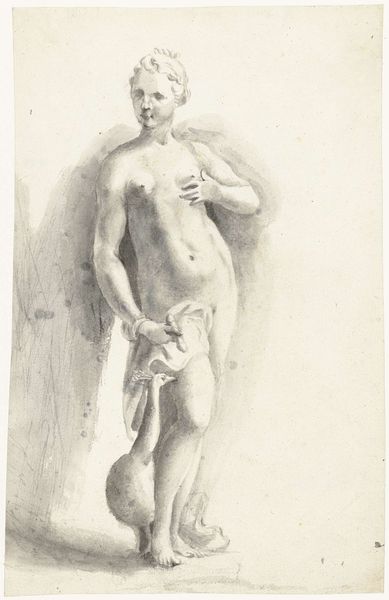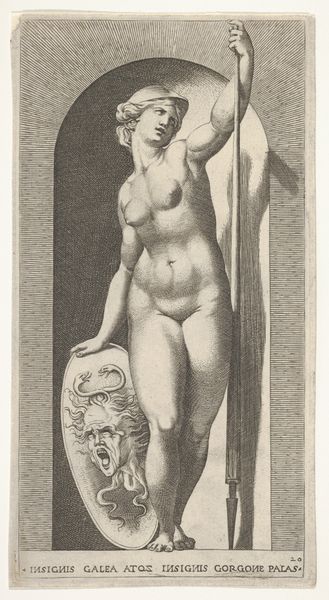
print, engraving
#
portrait
# print
#
figuration
#
pencil drawing
#
portrait drawing
#
history-painting
#
italian-renaissance
#
nude
#
engraving
Dimensions: height 165 mm, width 107 mm
Copyright: Rijks Museum: Open Domain
Editor: Here we have Bonasone's "Musica," an engraving from 1544, currently housed in the Rijksmuseum. I'm struck by how all these musical instruments are clustered around a nude female figure. What can you tell me about the imagery at play here? Curator: It's fascinating to consider how the arts, particularly music, were visually represented during the Renaissance. This engraving reflects a renewed interest in classical antiquity. Consider how the nude figure embodies an idealized form, referencing Greek and Roman sculptures, while the instruments symbolize the harmony and order believed to govern the universe. This image also makes me wonder, what socio-political function might idealized representations of Musica serve? Editor: You mention idealized forms and order. Is this then linked to the function of art in the public space during this time? Curator: Precisely. Public art, especially engravings and prints that could be widely distributed, were instruments for disseminating knowledge and shaping public perception. Figures like "Musica" served to elevate music to a level of intellectual and moral significance. How do you think the nudity impacts its public perception at the time, compared to today? Editor: I would imagine the nudity connected it more explicitly to classical ideals of beauty, but might have limited its circulation in some social spheres due to the sensibilities of the period. What I take away from this work is how public art could reinforce ideas of beauty, intellect, and order at the same time. Curator: Exactly! The Italian Renaissance saw the convergence of art, science, and politics, using powerful imagery to convey specific messages and cultural values. It really highlights how the meaning and function of art are always historically and socially situated.
Comments
No comments
Be the first to comment and join the conversation on the ultimate creative platform.
